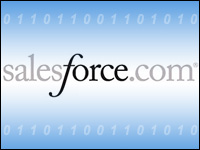
While use of on-demand Software as a Service (SaaS) is expected to grow rapidly in the next few years, many organizations continue to prefer in-house application development and on-premise deployment to support a range of key business functions and processes, as is discussed in Part 1 of this series.
Ease of integration, stronger tool sets for customization, a greater range of applications and tailored configuration capacity were listed by application software decision makers as reasons organizations prefer to rely on the on-premise and in-house development and deployment option, according to Forrester Research. They also cited loss of control and limited verticalization as reasons for shying away from SaaS.
Moreover, the ongoing development of Web services standards and SOA (service-oriented architecture) is enabling in-house application developers and systems engineers to use the same application and systems development tools, methods and standards being used by SaaS developers and vendors to develop and deploy their own rich, native Web application services.
On-Demand Options
A growing range of organizations are increasingly making use of SaaS, and for a variety of reasons. When it comes to scalability, technical flexibility, ease of configuration, lack of disruption in upgrades, usability and change management, Forrester Research sees SaaS as offering significant advantages compared to in-house, on-premise application development and deployment.
“SaaS is clearly a growing priority for CIOs (chief information officers) and venture capital investors. There are several factors spurring growth, but the biggest motivator is that customers can’t wait for the big vendors to update their code — they need to be agile in changing to meet their business needs, not focused on time-consuming, expensive upgrades,” Eric Meerschaert, vice president of global marketing for Sterling Commerce, told CRM Buyer.
However, organizations continue to develop their own custom-built applications and deploy them on-premise. Open standard software development toolkits and standards for SOA are increasingly enabling them to make effective use of on-demand Web application services within and without the organization.
Driving Needs
A driving need to access a diverse and disparate range of end users — both internal and external — and to integrate on-demand Web application services into their IT systems environments is leading a growing number of organizations to adopt SOA in-house, as well as make use of related distributed systems architectures, such as SaaS, offered by third-parties, noted Sandy Carter, vice president of SOA strategy, channels and marketing for IBM.
“First, let’s understand that one of the most significant values that can be derived from an SOA is the ability to break down application silos and create Web services that can proliferate throughout an organization. You can consider the efforts by organizations adopting an SOA to be similar, if not the same, to creating on-demand Web services that mirror a SaaS approach.
“Further, an SOA can help accelerate and execute business processes while avoiding redundancies, or the ‘one-off,’ approach. This allows a company to streamline many of its administrative functions so that employees can focus on achieving business goals,” he told CRM Buyer.
Customized On-Demand Apps
As the IT service provider for the Association of Savings Banks of Bavaria, IZB Informatik-Zentrum manages applications and systems for 81 bank branches. With Bavarian savings bank customers increasingly turning to the Web to do their banking, IZB recognized the need to migrate its clients’ core applications to the Web and to find a more secure and efficient way of deploying custom-built, native Web application services.
The IT service provider, after consulting with its clients, opted to migrate its Sun Solaris client-server environment to two IBM eServer zSeries 990 systems running the IBM z/OS operating system.
Seeing a need to separate heavily used Unix system services from legacy applications for security reasons, all Java applications run on IBM WebSphere Application Server for z/OS. IBM WebSphere Application Studio, which is integrated with Java Runtime Environment and Java Tools, is used for developing core Java applications.
Using IBM WebSphere Application Server V6 in 64-bit mode, IZB has deployed Enterprise JavaBeans applications running under z/OS V1.7 and is serving several different Web applications — including Beta Web Enabler from BetaSystems, MediaWiki and IBM WebSphere Studio Application Monitor software using “Linux on IBM” System z — under IBM z/VM 5.2. The company has deployed several new applications, including a portal system and a thin client interface for branch office operations, according to an IBM case study.
Faster development cycles have been a major benefit of migrating to the IBM System z infrastructure, according to Friedhelm Stoehler, IT architect for IZB Informatik-Zentrum.
“The ability to install new WebSphere Application Server instances on the fly gives us the flexibility to roll out new applications and services rapidly — without sacrificing security or cost-efficiency,” Stoehler stated in the case study.
Extending On-Demand Inside the Organization
Keen to their customers’ business needs and IT requirements, SaaS vendors are extending their platforms by offering customers the ability to build and, if so desired, share their own customized on-demand applications.
“We at Salesforce.com know that we alone can’t build all of the applications our customers could possibly need to run their business. Therefore, we created the first on-demand platform and programming language that provides developers and partners with the tools necessary to build any application on-demand,” Kendall Collins, the company’s senior vice president of marketing, told CRM Buyer.
These on-demand applications can be immediately deployed and made available to Salesforce.com’s customers via its AppExchange Web site.”Like iTunes for music, the AppExchange is a one-stop shop for business applications,” Collins said.
Salesforce.com earlier this year released the Salesforce Platform Edition and Salesforce SOA, two innovative products that expand on the efforts the company has made in building up the SaaS market.
On-Demand Cooperatives
Moreover, groups of organizations within economic and industry sectors are collaborating and making use of on-demand application development and deployment tools and methods to develop shared SaaS platforms to develop native Web services for internal, business-to-business and business-to-consumer applications.
SWIFT, a global cooperative of international banks, is using SaaS to facilitate fund transfers and electronic communications between banks throughout Europe, noted Sterling Commerce’s Meerschaert.
Efficient, secure systems integration is at a premium in a frequently changing software and business operating environment, whether it’s in-house, customized or off-the-shelf application software, Meerschaert commented.
“In today’s large corporate organizations, even the enterprise is multi-enterprise. We hear from many customers that it is just as hard to integrate their internal divisions or locations as it is to integrate with customers — the challenges are the same,” he added.
Merger and acquisition activity and globalization have complicated enterprises, said Meerschaert.
“To run a business profitably and quickly means you must focus on interoperability, not dictating standards. Sterling Commerce offers proven reliable solutions for customers to rapidly integrate everything from a few isolated teams to multibillion-dollar acquisitions without investing in dramatic restructuring or code-intensive integration of existing applications,” he explained.
























































i have an article regarding saas vs in house
http://www.ideyatech.com/2008/11/saas-vs-in-house-application-development/